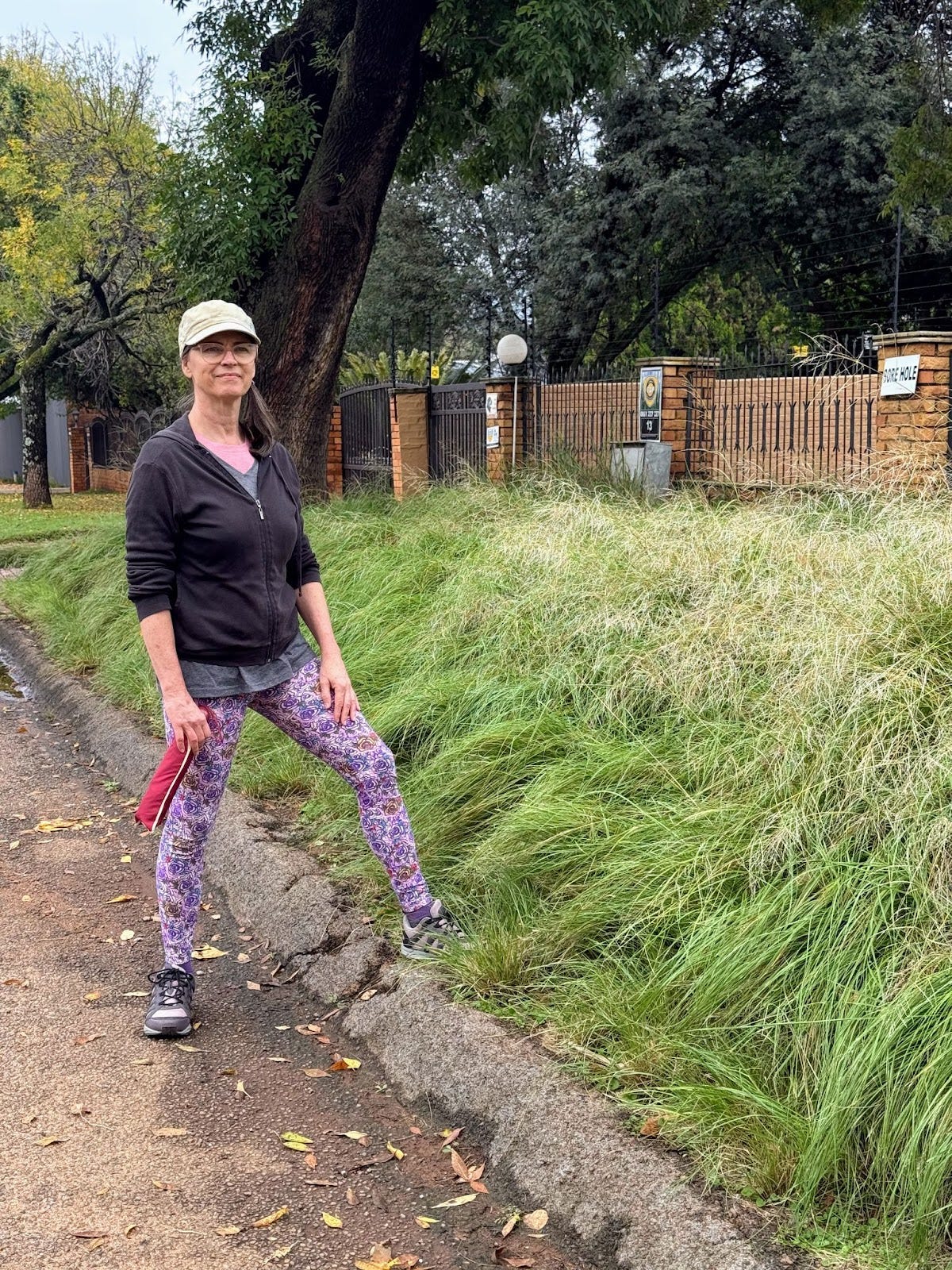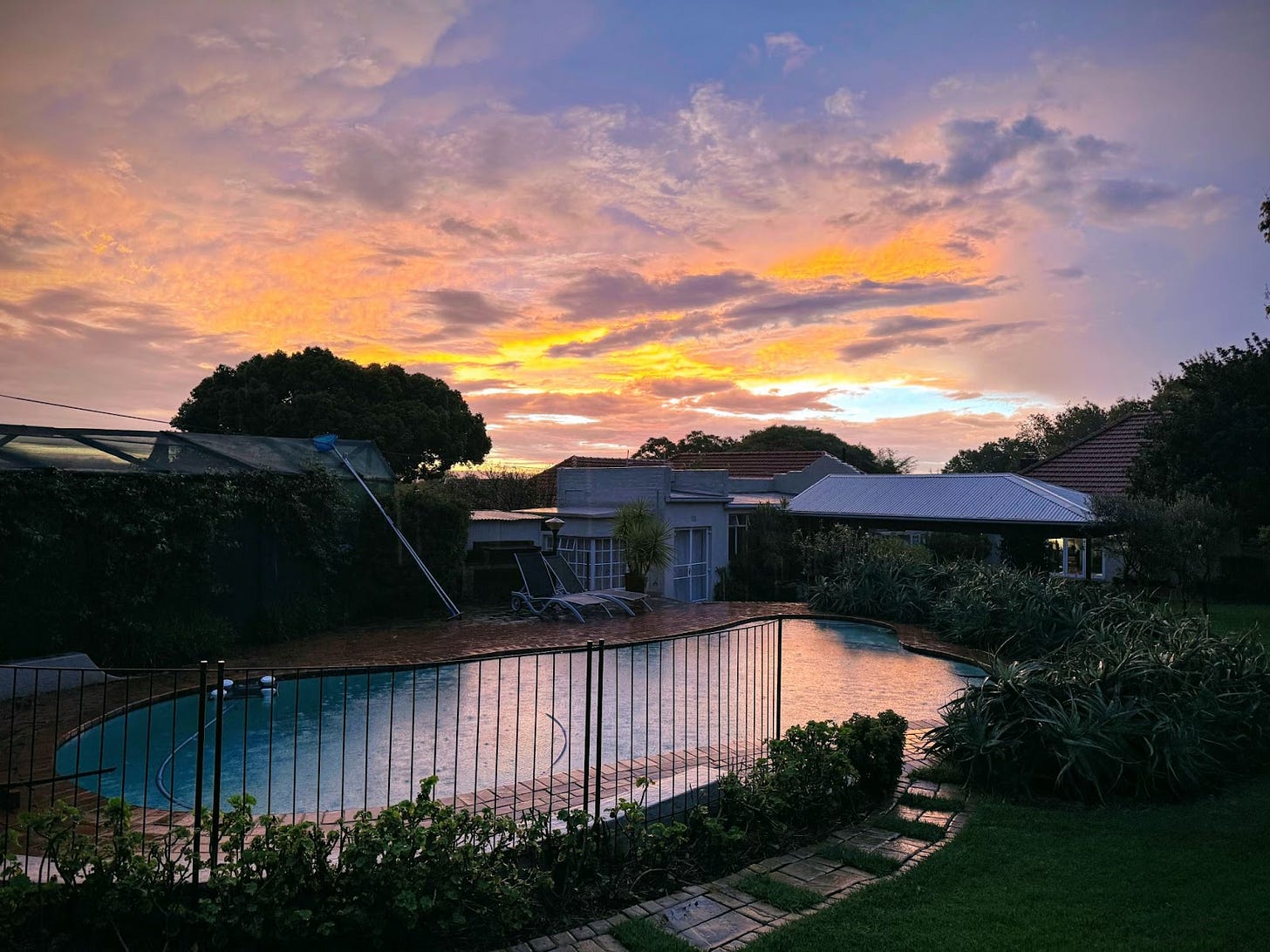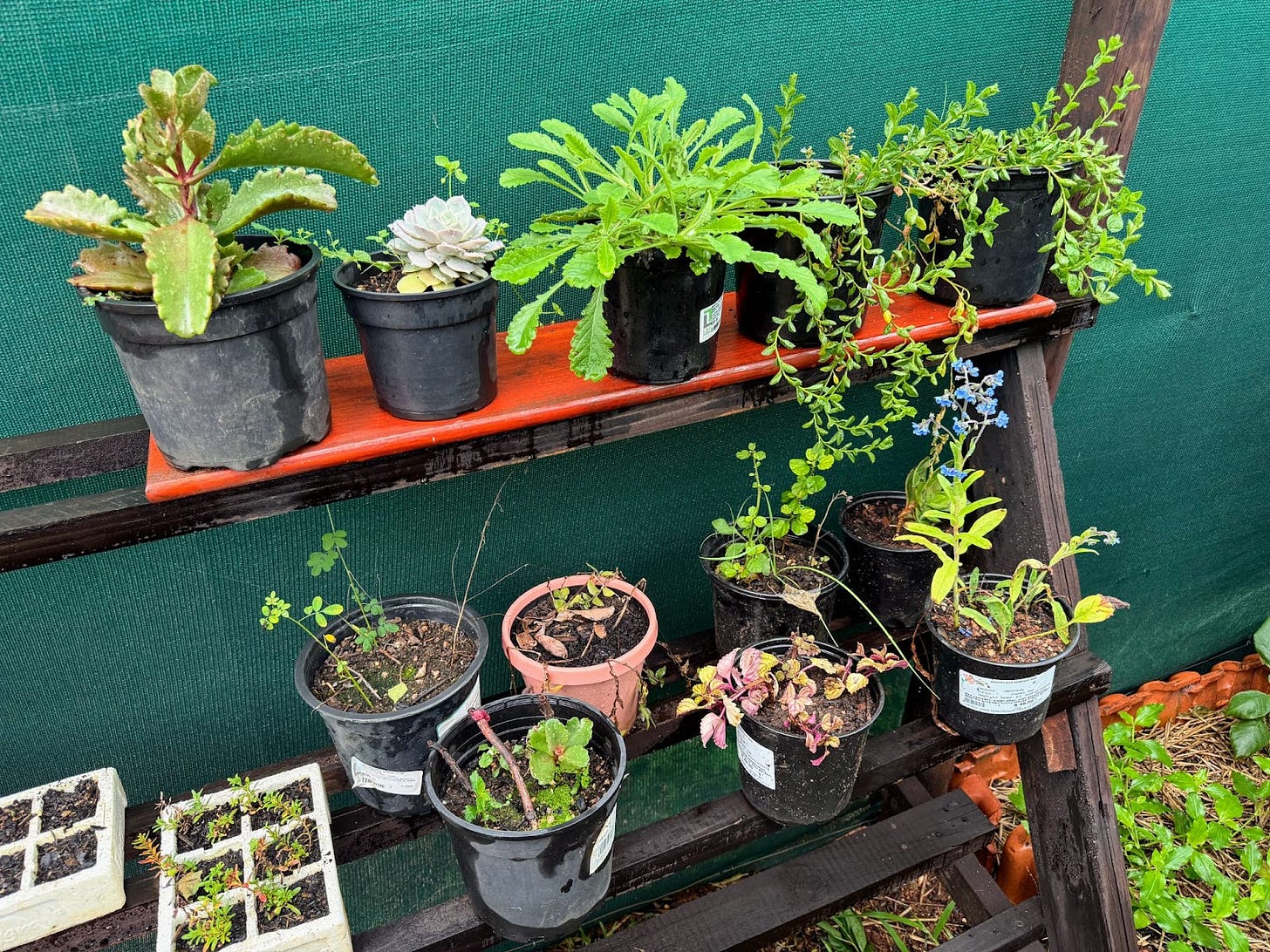Grown from cuttings
A large garden requires focus, care and patience, something that not all of us have. Matthew does and he loves growing plants from cuttings too.
Enabling The How #211. Reading time: 5 minutes, 4 seconds
We are privileged to live on a large property in the middle of a quiet suburb in Johannesburg. We have a large backyard with both a flower and vegetable garden. The notion of rolling green lawns to frolic on, well tended beds of colour and texture to admire and a food garden to source home grown produce from, is the romantic desire of many.
On the other hand it is not everyone that would appreciate a large expanse of land to look after. It takes time, expertise, seasonal luck and, of course, money, for the upkeep. Knowing what to plant and where, is one thing, having the time, motivation and energy to do so, is another. Unless you love to garden, that is.
Green fingered mothers
Chantal grew up on a plot, in a place called Honeydew. At that time the area was made up of smallholdings and farms. Now it has been cut up into dense housing and carpeted with townhouses. Then, grassland abounded, paddocks and grazing fields were fenced in by barbed wire and sand roads circled and cut through much of the area.
Around the houses on these expansive properties there was usually a moat of mown Kikuyu grass, shaded by jacaranda and syringa trees, the odd pine and oak tree. Flower beds resplendent with hydrangeas, agapanthus, roses, gardenias, dahlias and nasturtiums wound their way beside pathways, along walls and encircled pelindaba rockeries.
One of Chantal’s fonder memories is of the keen green fingered mothers who knew the real names of their flowers and shrubs. This she found remarkable. “How do they do that?” She wondered as fancy and foreign words spilled from their mouths and, more remarkably, were understood by the other mothers.
These mums had soil splattered gardening gloves, broad hats and trowels that they used. They also had hired help to do the heavy lifting. Although the smell of rain drenched earth is one of her favourites, Chantal never caught the gardening bug enough to get her hands really dirty.
To be a gardener you have to be patient, not one of Chantal’s significant traits. No seed is planted today that shows its plume tomorrow. You also have to be committed season in and season out to focus on seed planting time, weather forecasts, water levels, shade, sun, semi shade and frost issues. It’s a lot.

The joys of gardening
Matthew was introduced to the joys of gardening by his grandmother, or Nanna, as he called her. She loved all things green and flowering, it was rumoured that her father was a horticulturist to the royal family. Matthew would spend time with her and help her plant and feed and water the abundance of plants she cultivated in her small garden.
He accompanied her to Multiflora where she would purchase a small plant for him to nurture. His bedroom was filled with pots: succulents on his windowsill, ferns in macramé hanging baskets and African violets on his desk.
One of the first jobs Matthew got was working for a garden nursery. It was here that he learnt how to cultivate plants from cuttings. His enthusiasm knew no bounds:
“Nature is truly amazing,” he would remark to anyone who was listening. “Can you imagine that you can grow something from a twig?”
Our gardener shook his head when Matthew first introduced him to cultivating from cuttings. He thought Matthew was mad. He was not.

Grown from cuttings
Wherever we go, Matthew looks out for interesting plants. He has learnt to take three cuttings from each plant. This increases the possibility of having at least one that will take. He has sourced cuttings from Victoria West, George, Dullstroom, Parys, Wilderness and many other places that we have visited.
Depending on how far away we are from home, Matthew will either cut and dump in the cup holder of the car or cut, cover with a wet serviette or towel and pop into a plastic bag. Once home he prepares the containers with drainage material and soil, rubs the end of the cutting with root stimulator and pushes it into the potted ground. Waters, watches and waits.
Pots of new and not so new cuttings dot and dance along the paving outside the kitchen and in the green house. Many of them look in dire need of resuscitation. Or discarding. Matthew does not give up on any of his plants until he absolutely has to.
At first the twigs and leaves hang limp and sad looking, but slowly some, not all, take root and start to stand tall. Some even start flowering. Once the cuttings have grown strong and more solid they are transplanted all over the garden.
Matthew can give a tour of where we have been based on the plants in the garden. His hobby is a creative way to create memories.

Resilient and resourceful
The unusually wet summer we have experienced in Gauteng, thanks to La Niña, has had its impacts. We live in an environment that is usually high and dry. This summer has been very rain-soaked. Where there was a reliance on sun, we woke to heavy grey skies. Day in and day out.
A garden loves water, but not too much. Plants love sun and there wasn’t enough. Vegetables drowned in waterlogged soil, and leafy greens curled in soggy dismay. We have and will lose vegetables and plants. However, all is not lost.
As soon as the clouds have moved on and the sun emerges for more than a few hours and over a few consecutive days, the soil will dry out and the vegetation will recover. Resilient and resourceful as ever is nature.
Resilient and resourceful as ever are human beings too. However this is not always enough. We have just completed a wellbeing assessment project for a medium sized manufacturing company. The results are sobering.
The percentages of those employees who are “at risk” are high. It is not that these people lack resilience, in fact their ability to bounce back and keep on going in spite of their hardships is remarkable. Their resilience, however, does not prevent them from feeling depressed, anxious or hopeless.
Life will ensure that there will be times when we are knocked down, cut off and tripped up. Resilience gives us the stamina to continue; resourcefulness, the ingenuity to make a plan. Better still is the opportunity to build emotional fitness which leads to long-term wellbeing, inner alignment and sustainable growth. That is what we want to bring to the world. That is how we believe the world will become a better place.
Until next time.
Yours in feeling,
Matthew & Chantal
P.S. We are going to be taking a two week hiatus from our newsletter. We are off on a road trip around the country to gather more stories to fill these pages.





